RECLAIMING SPACE FOR CITIZENS
My talk at “Conversations: If Walls Could Talk”, a forum organised in conjunction with the exhibition, “Art from the Streets“, at the ArtScience Museum, Singapore.
It is good to know that the street art scene in Singapore is growing. I think of the gritty graffiti of Sao Paulo, the whimsical pieces around Manhattan’s Lower East Side and the selfie-friendly art adorning Georgetown, Penang. Street art humanises our urban habitats and adds to a city’s capacity to surprise.
We’ve heard today how practitioners here like Zul “Zero” Othman have been fighting for more space for their art. But it occurred to me that someone visiting Singapore from another planet or another era may wonder what all the fuss is about. Isn’t there enough of this artform already?
If you arrive at Changi Airport’s T4 like I did yesterday, you’d be immediately confronted with bold graphic creations….
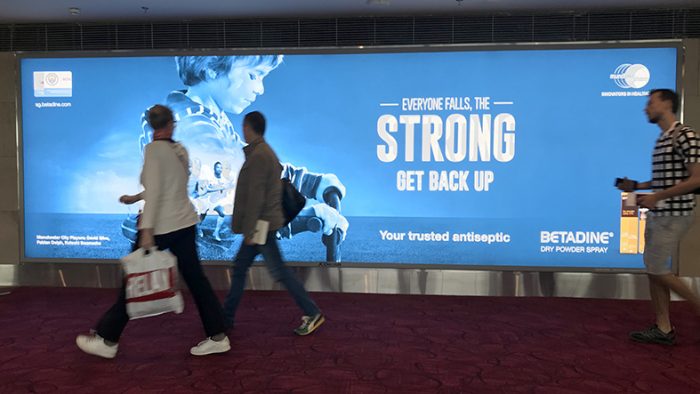
As you approach Immigration, instead of a big Welcome to Singapore sign, there’s another massive piece….
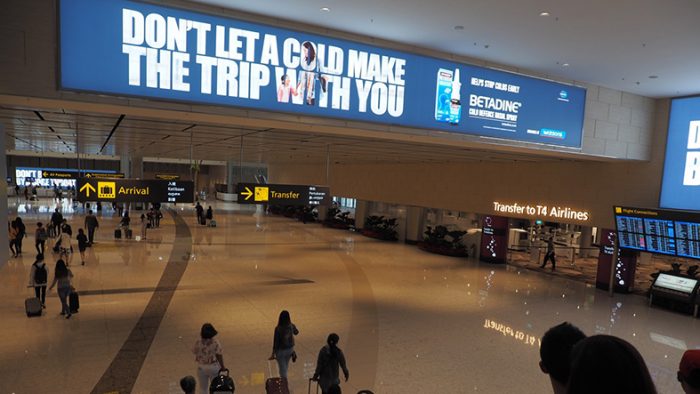
Pass through Immigration and there’s more of this artist’s work. He signs off with the tag “Watsons”. I understand he is a Hongkong-based artist, so famous that you’ll find many stores across Asia carrying his name.
I trust you’d have realised by now that I’m not seriously equating commercial advertising with art. I’m highlighting this example to challenge some the entrenched assumptions and blindspots that come into play when we discuss whether we should make more room for street art.
Street art is sometimes talked about as if it is a kind of pollution, adding to clutter, spoiling the visual purity of the city. This is based on the notion that the urban landscape must conform to some kind of civic and aesthetic orderliness; that people going about their lives shouldn’t have to be assaulted by messages and symbols against their will.
The thing is, if Singapore ever was such a city, it certainly isn’t now.
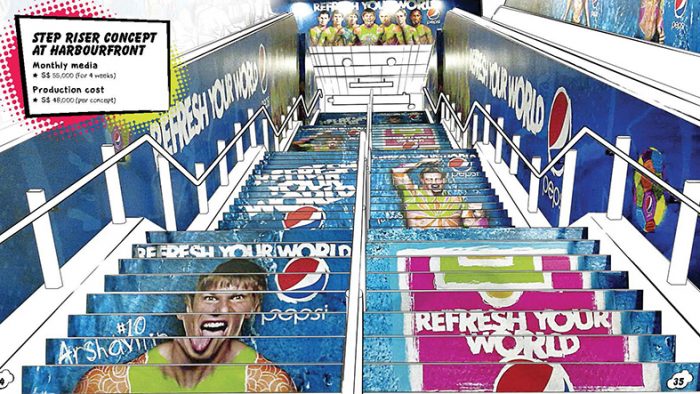
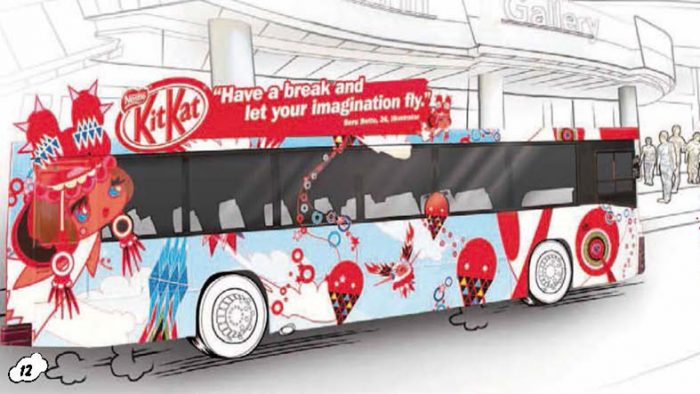
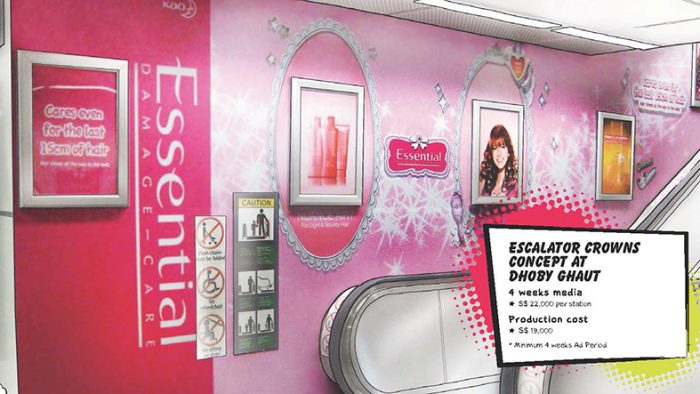 Our urban media landscape has long been punctuated with words and images placed by private parties to serve their own interests. The Terminal 4 experience is hardly unique. Our public transport operators in particular exploit the fact that they have a captive audience.
Our urban media landscape has long been punctuated with words and images placed by private parties to serve their own interests. The Terminal 4 experience is hardly unique. Our public transport operators in particular exploit the fact that they have a captive audience.
Indeed, the outdoor advertising industry likes to promote itself as the medium that people can’t turn off.
So the real policy question we need to ask ourselves is not whether to preserve a dignified and austere aesthetic style versus a livelier visual field – that bus left the station long ago. Rather, it is how do we as a society decide who gets to place words and images on urban surfaces and infrastructure for all to see.
What are the rules of the game — the aesthetic or ethical principles, and the legal and regulatory arrangements — that determine the allocation of spaces for either artistic or commercial expression? When we ponder this question, we’ll quickly realise that the market has been given enormous power to make those decisions on our behalf.
If this doesn’t occur to us most of the time – if it seems normal, natural or even inevitable that money talks – it’s only because we’re so used to it, and because the same market logic dictates so much of the rest of our lives. Once we open our eyes and minds, we’d have to admit that our society’s generally negative reaction to street art is inconsistent and hypocritical. Most of the accusations levelled at street art could apply as much to commercial art, but aren’t.
For example, in terms of aesthetics, even if you don’t like particular styles of street art, it’s not as if you get to veto ugly advertisements placed around you by commercial firms or your town councils. And even if more space was opened up for artists, they would still account for a very small proportion of all the images and words being placed in public view, compared with other institutions that currently monopolise our urban media landscape.
Then there are people, including the authorities, who worry about the content of street art, fearing that it may be too “political” or “controversial”. Again, it’s not clear why such paternalism is confined to non-commercial art, and not applied to the many for-profit messages around us. If we are sincerely concerned about the potentially harmful effects of words and images placed in public, then surely the following commercial messages are far more problematic than whatever our street artists are willing and able to plaster on walls:
Sexist ads and displays that objectify women and girls…
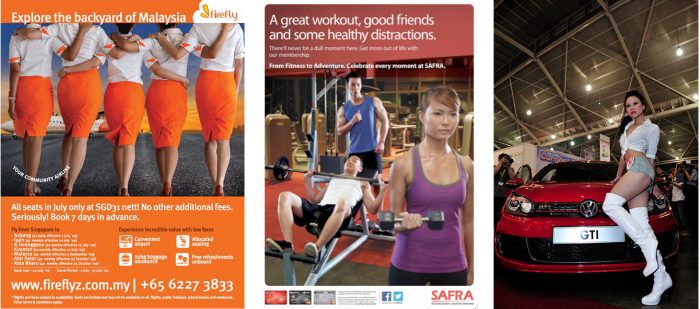
Ads for alcohol, which are permitted on buses…
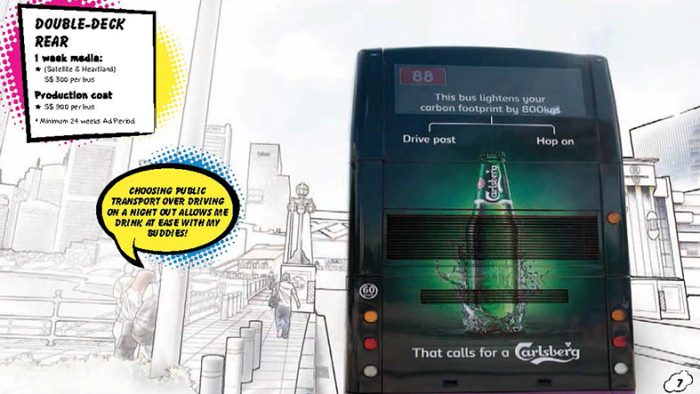
Ads that promote sugary drinks and fried food – like this misleading video commercial for coconut oil inside a taxi that implies that fried food will give you a longer life…

The cause-and-effect link between these persuasive messages and actual harms is far more strongly established than any wild claims about the dangers of today’s street art.
Yes, we do need to regulate what appears in the public eye, but regulations should be based on consistently applied principles, not cultural or ideological biases that result in too much latitude being given to commercial messages and not enough to not-for-profit art and self-expression.
Pro-Palestine messages have been removed from the approved graffiti walls at the youth spaces in Somerset. But if the principle being applied here is that the Singapore streetscape should not get entangled with the fraught Middle Eastern conflict, what about the fact that Marina Bay Sands is one of the top sources of profit for Sheldon Adelson, who was the biggest single donor to Donald Trump’s hate-filled election campaign and a major supporter of Israel’s illegal settlement building in the Occupied Territories? If we are fine with Marina Bay Sands’ prominence on the Singapore skyline despite its fairly direct and demonstrable connection to the subjugation of Palestinians, it seems only fair that we should allow artists to make pro-Palestinian art on a little wall that has been set aside specifically for graffiti.
Behind such inconsistency in treatment is perhaps the assumption that support for a cause expressed in words and images is more problematic than support expressed in cash, even though common sense tells us that money usually speaks louder than symbols.
Of course, market logic is a very powerful force that is difficult to resist. The commercialisation of our public spaces is partly driven by a very large and growing outdoor advertising industry. To give it its due, advertising does help to subsidise the provision of public services and infrastructure. To put it very simply, we’d probably have to pay more for our MRT and bus rides if we denied public transport operators the right to monetise their surfaces by selling advertising spaces instead of giving it away for not-for-profit purposes such as art.
Furthermore, the idea of property rights is probably too entrenched to dislodge, so let’s banish any dreams of allowing anyone to paint anything without permission. If street artists want to gain more than fringe acceptance, they would have to respect people’s expectation that what they own or manage shouldn’t be messed with in any way without their consent.
For some artists, law-breaking may be integral to the spirit of their performance (a bit like how civil disobedience deliberately seeks to break the law). I’m going to sidestep this issue, because I believe the vast majority of street artists are not in this category.
Certainly, they want to break convention, to challenge norms, to push boundaries. As Zul said earlier, he does not want to confine himself to “sanctioned” or “commissioned” art. But whether it’s legal or illegal is something others decide. The art does not set out to break law, it’s the law that breaks the art.
Take Samantha Lo’s efforts to humanise our streets.
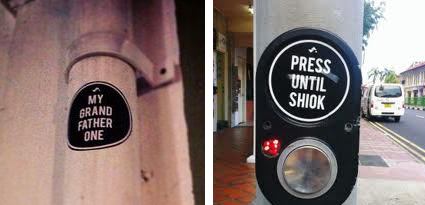
As many others have already pointed out, it’s quite a stretch to claim that her humorous stickers were a danger to society. On the contrary, it was a wonderful way to add a layer of quirky Singaporean meaning to otherwise anonymous streets. It hardly deserved to be treated as a criminal act.
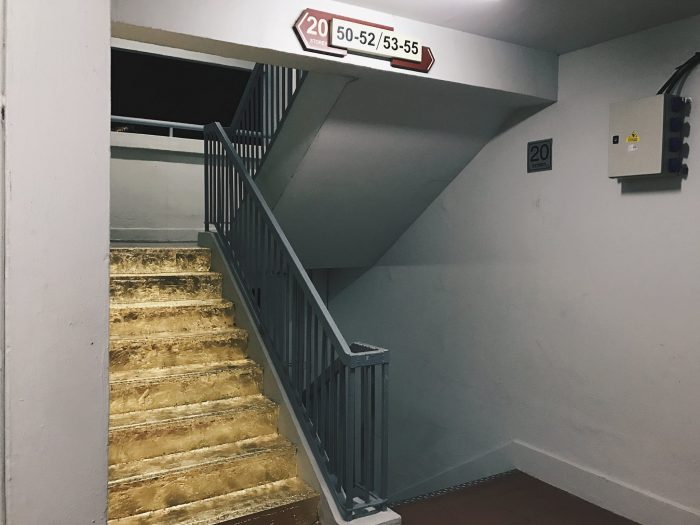 Last year, there was Priyageetha Dia’s golden staircase. Like Lo, Priya didn’t have permission to do this. But this was a hardly-used staircase. And after hearing from her today, you’d have to say that few Singaporeans could have as much moral justification as she had to turn this staircase into a canvas for self-expression. She has lived in the block all her life. It means something to her. Since the block has been upgraded with lift landings on every floor, residents don’t use those stairs anymore. Fortunately her town council was wise enough not to punish her. But, shockingly, she did receive violent online threats from members of the public, including threats of rape, showing how deeply ingrained is some Singaporeans’ view that anything in the public realm belongs to big government and big business, and that non-sanctioned citizen initiative is absolutely not welcome.
Last year, there was Priyageetha Dia’s golden staircase. Like Lo, Priya didn’t have permission to do this. But this was a hardly-used staircase. And after hearing from her today, you’d have to say that few Singaporeans could have as much moral justification as she had to turn this staircase into a canvas for self-expression. She has lived in the block all her life. It means something to her. Since the block has been upgraded with lift landings on every floor, residents don’t use those stairs anymore. Fortunately her town council was wise enough not to punish her. But, shockingly, she did receive violent online threats from members of the public, including threats of rape, showing how deeply ingrained is some Singaporeans’ view that anything in the public realm belongs to big government and big business, and that non-sanctioned citizen initiative is absolutely not welcome.
My gut feel tells me that there must be ways we can change the law, and with it social attitudes, to be more hospitable to street art. Not to remove regulation but to improve regulation.
The kind of interventions that Samantha and Priyageetha made in our public space should be positively welcomed. This is Nation Building 3.0, where citizens, without waiting for top-down guidance, find and express their personal connections to their country. Technically, they may be rebelling against bureaucratic rules, but at a deeper level they thicken the ties between citizen and nation. Our authorities need to understand this and adapt regulation accordingly.
If, for example, an artist agrees to restore a surface to its original condition if asked to; if there is no permanent damage to property; if there is no material loss to property owners while the art is on display – do we really need to criminalise such art as acts of vandalism? Policy and regulatory creativity needs to catch up with artistic creativity or, for that matter, or citizens’ desire to reclaim their city, a city that we too often feel alienated from, taken from us by faceless corporations and bureaucrats. Thus, I hope we can find ways to minimise the cost to the artist of engaging in street art.
In addition, I hope we can create more opportunities for such activity. The lowest-hanging fruit, the goal that is the easiest to accomplish, is of course to encourage more private and public sector property owners to commission street artists to adorn their walls.
I started with an airport example; let me return to airports, this time Jakarta’s new terminal, also opened last year. Someone had the bright idea to get an artist to doodle around the fire extinguishers.
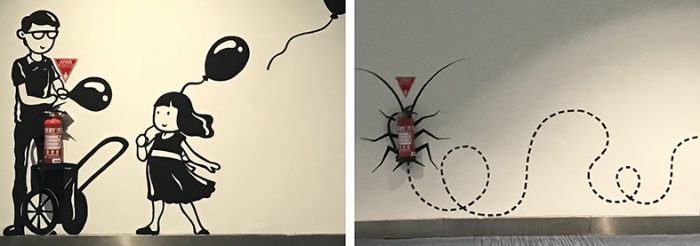
The result is to make the long, tiresome walk from the gate to immigration a little more pleasurable. It shouldn’t be too difficult to find other such win-win opportunities.
In addition to commissioned street art, we should find ways to open up more spaces for freer expression. Most of our current sites are in “alternative” neighbourhoods.
To bring street art to the heartlands, I’d like to see town councils, six months before blocks are due for repainting, open up selected walls for street art. Let the artists run wild. Then allow residents vote on whether the art should be preserved or painted over at the appointed time. I think this would be an educational experience for all. And since the wall was due for repainting anyway, this exercise would be at no cost to residents or taxpayers.
Public transport operators are currently the most welcoming of commercial advertising, and I’d like to see them allocate some of that space for street art. Why can’t bus companies, as part of their licensing requirements or voluntarily as part of their corporate social responsibility, allocate 5 per cent of their buses for free to artists instead of commercial advertisers.
This would of course require artists to change medium, exchange their spray cans for digital printing on adhesive vinyl, but as this exhibition makes clear, many street artists around the world have welcomed the opportunity to work on new surfaces and with new materials.
The current system has decided that we we as residents of this city should be exposed to ads on wheels. If so, why not also art on wheels.
I hope this exhibition and the discussion we’ve had this afternoon will help shake up the rarely questioned logics behind the way we currently do things. We shouldn’t blindly surrender our urban media landscape to commercial interests. We can afford to allow artistic expression occasionally to take priority over the impulse to sell goods and services.
- Main image: “State of Decline” by Singaporean artist Speak Cryptic, created on site at the ArtScience Museum.
- The bus and MRT ad graphics are from Moove Media’s brochure.
- The SAFRA gym ad caused a controversy in 2014.
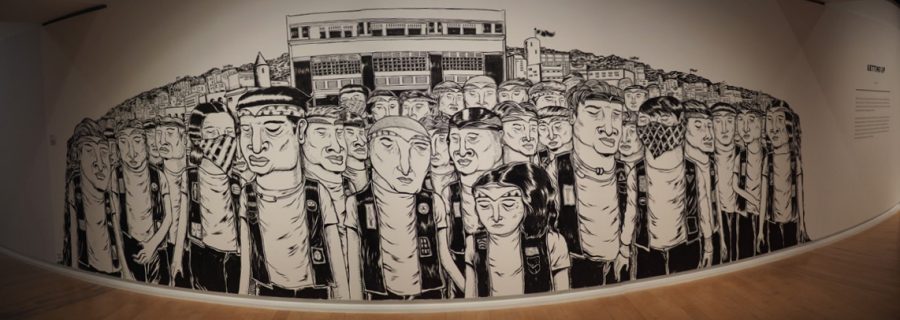




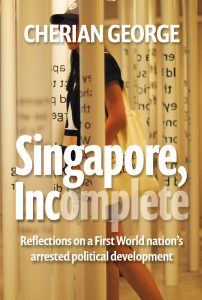
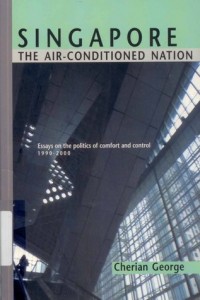
Comments are closed.